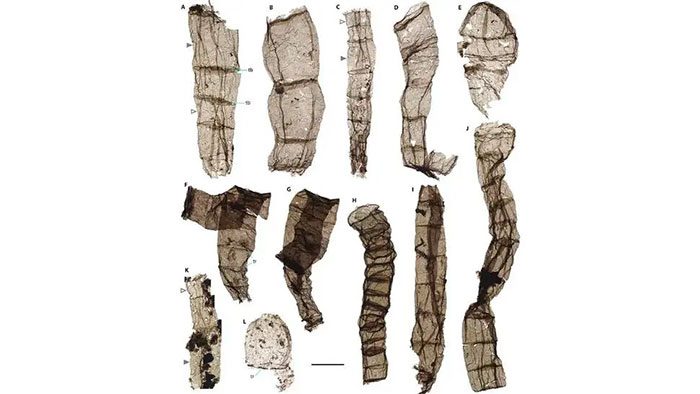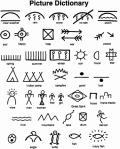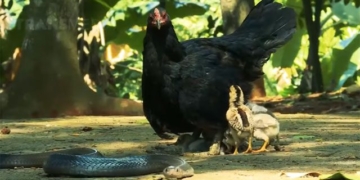A recent excavation in China has uncovered astonishing fossils of 1.6 billion-year-old organisms, representing a significant evolutionary milestone.
According to Live Science, the fossilized organisms in China may represent the first multicellular life forms on the planet. More importantly, with an age of 1.6 billion years, they push back the appearance of this group of organisms by as much as 70 million years compared to previous understandings.
Named Qingshania magnifica, this strange filamentous organism was collected from the Chuanlinggou Formation on the outskirts of Tianjin.

Fossils that promise to change the evolutionary history of species on Earth – (Photo: MIAO Lanyun).
Some samples contain spores, indicating that they are microorganisms capable of asexual reproduction.
According to scientist Lanyun Miao from the Nanjing Institute of Geology and Palaeontology, a co-author of the study, these filamentous microorganisms exhibit a certain level of complexity and surprising morphological variation.
Historically, the timeline shows that Earth had only tiny unicellular organisms without nuclei 3.9 billion years ago.
It was not until 1.65 billion years ago that eukaryotic organisms (also unicellular but with a nucleus) were documented in sedimentary records from northern China and Australia.
If the 1.65 billion-year mark for eukaryotic organisms is accurate, then their evolution into multicellular life in just 50 million years represents a remarkable evolutionary leap.
In an independent commentary, Associate Professor Jack Craig, an expert in evolutionary genetics who was not involved in the study, stated that multicellularity is a prerequisite for any definition of modern complex life.
“Thus, redefining the timeline for such a foundational event will significantly impact how we think about the lineage that ultimately led to humans,” Professor Craig emphasized.





















































